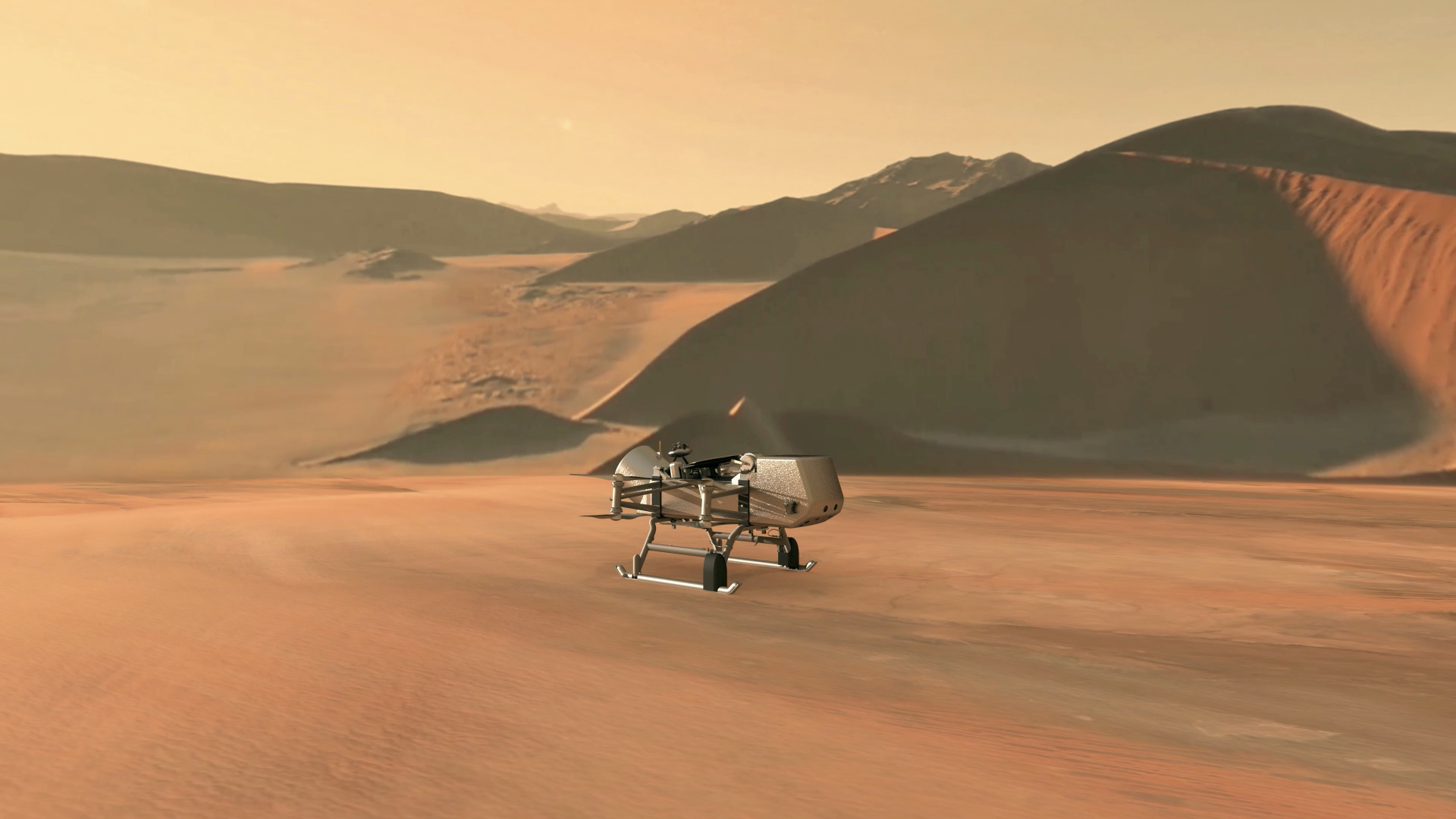Yesterday, NASA announced the selection of its fourth mission in the New Frontiers portfolio: Dragonfly, an octocopter lander (a Mars rover-size, drone-like vehicle) that will explore the prebiotic organic chemistry of Titan, the biggest of Saturn’s 62 known moons and an intriguing ocean world with a dense, hazy atmosphere and methane seas.
NASA Goddard’s Melissa Trainer will serve as one of two deputy principal investigators on the mission, which will be led by principal investigator Elizabeth Turtle from the Johns Hopkins Applied Physics Laboratory (APL) in Laurel, Maryland.

The Dragonfly octocopter will be able to make multiple flights around the moon, aided by Titan’s dense, calm atmosphere and low gravity. It will explore and sample various locations on Titan, tens to hundreds of miles apart, in order to characterize the habitability of the moon’s environment, investigate the progression of prebiotic chemistry, and even search for chemical hints of water-based or hydrocarbon-based life.
The spacecraft is scheduled to launch in 2026, reaching Titan in 2034. Among the instruments onboard will be a mass spectrometer with laser-desorption and gas-chromatography capability, which will perform chemical analysis of samples collected from the surface. NASA Goddard will build the Dragonfly Mass Spectrometer, or DraMS, and manage its sampling system. DraMS’ design will be based on the highly successful Sample Analysis at Mars (SAM) mass spectrometer aboard NASA’s Curiosity rover, which is currently traversing the Glen Torridon region of Gale Crater. The new instrument also draws on advancements made by the Goddard team that developed the mass spectrometer for the Mars Organic Molecular Analyzer (MOMA) for the Rosalind Franklin rover of the ExoMars mission that will launch in 2020.
Goddard engineers also will build a portion of the Dragonfly Gamma-Ray and Neutron Spectrometer, or DraGNS, an instrument that can determine the elemental composition of the ground immediately below the lander without taking in any samples. This quick surface analysis by DraGNS at each new site will help the science team determine the type of sampling, if any, necessary at each site, plus whether a detailed chemical analysis should be performed. DraGNS will be built and assembled by APL.
Led by APL, the Dragonfly team includes key partners at NASA’s Goddard Space Flight Center, Lockheed Martin Space, NASA’s Ames Research Center, NASA’s Langley Research Center, Penn State University, Malin Space Science Systems, Honeybee Robotics, NASA’s Jet Propulsion Laboratory and the Japan Aerospace Exploration Agency. New Frontiers is managed by the Planetary Missions Program Office at NASA’s Marshall Space Flight Center in Huntsville, Alabama, for the agency’s Planetary Science Division in Washington.
Dragonfly is the fourth mission in NASA’s New Frontiers portfolio. Its predecessors are the New Horizons mission to Pluto and the Kuiper Belt (including an object known as 2014 MU69); the Juno mission to Jupiter; and OSIRIS-REx, which will return a sample of the asteroid Bennu.
By Lonnie Shekhtman
NASA’s Goddard Space Flight Center, Greenbelt, Md.





























